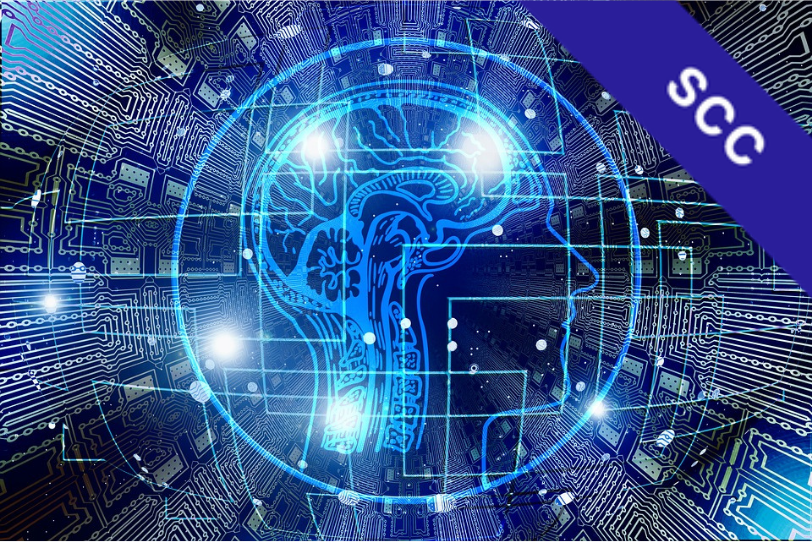Introduction to Machine Learning

INTRODUCTION TO MACHINE LEARNING
Hello everyone!
Machine learning is the application of artificial intelligence (AI) that provides machines the ability to learn and improve automatically without being explicitly programmed for each task. The main focus of Machine Learning is to provide algorithms to build and train systems so that they can solve real-world problems.
The first course of the Machine Learning Program provides learners with an overview of Machine Learning and its practical applications. In this course, students will be equipped with additional knowledge of Calculus, Linear Algebra, and Probability Statistics necessary for Machine Learning. You will have the opportunity to explore and refresh your Python programming skills for Machine Learning, one of the most widely used programming languages for modern AI/ML. Through a series of case studies, learners will accumulate the necessary skills and practice in key areas of Machine Learning such as Prediction, Classification, Clustering, Information Retrieval, and Deep Learning with Image Searching.
Wishing you all success in your studies!
COURSE OBJECTIVES
Upon completion of this course, students will achieve the following standards of knowledge and skills:
- Understand basic ML concepts.
- Comprehend fundamental concepts related to ML in calculus, linear algebra, and probability statistics.
- Review and practice basic Python programming, Python data structures, working with Pandas and Numpy, Classes, and Inheritance.
- Understand and practice ML tools: Sklearn, Jupyter Notebook.
- Grasp basic supervised and unsupervised learning in Machine Learning through case studies.
LEARNING EXPERIENCE
To begin, take a few minutes to explore the course and its overall structure. The course consists of 4 sections with 19 lessons. Throughout the lessons and at the end of each section, practical Labs and major assignments (Projects) will help reinforce your understanding and application of the learned theory into real-world problems. For effective learning, continuously enhance your knowledge, never stop learning, research, and create a reasonable study plan to excel in the course.
During the learning period (expected to be 6 weeks), proper allocation of study time is crucial. If you have any questions, connect with a Mentor for assistance.
COURSE STRUCTURE
Module 1: Overview of Machine Learning
- Lesson 1 - Introduction to Machine Learning
- Lab 1: Jupyter Notebook
Module 2: Python for Machine Learning
- Lesson 2 - Python Fundamentals: Data Structures
- Lab 2: Basic Python
- Lesson 3 - Advanced Python: OOP and API
- Lab 3: OOP with Python
- Lab 4: Initializing Basic API
- Lesson 4 - Numpy in Python
- Lab 5: Numpy in Python
- Lesson 5 - Working with Data in Pandas
- Lab 6: Working with Data in Python
- Lesson 6 - Data Visualization with Matplotlib
- Lab 7: Data Visualization with Matplotlib
Project 1 - Develop a tool for calculating exam scores and classifying students.
Module 3: Mathematics for Machine Learning
- Lesson 7 - Linear Algebra - Vectors
- Lesson 8 - Linear Algebra - Matrices
- Lesson 9 - Multivariate Calculus - Gradient and Derivatives
- Lesson 10 - Multivariable Calculus - Chain Rule and Optimization Problems
- Lesson 11 - Descriptive Statistics
- Lesson 12: Correlation and Regression
- Lab 8: Basic Statistics with Python
- Lesson 13 - Probability
- Lesson 14: Probability Distributions
- Lab 9: Basic Probability with Python
Progress Test
Module 4: Machine Learning Foundations: A Case Study
- Lesson 15: Linear Regression Problem
- Lab 10: Salary, Profit, and House Price Prediction Problems
- Lesson 16 - Classification Problem
- Lab 11: Comment Evaluation and Product Purchase Decision Prediction
- Lesson 17 - Clustering Problem
- Lab 12: Customer Segmentation at Shopping Centers and Retrieving Wikipedia Articles
- Lesson 18 - Recommender System
- Lab 13: Song Recommendation
- Lesson 19: Deep Learning Problem
- Lab 14: Deep Features for Image Retrieval and Classification
Sentiment analysis and image classification example
COURSE DESIGN AND REVIEW EXPERTS
Course Design: Ph.D. Nguyen Van Vinh

- Lecturer & Core Member of the AI Laboratory, University of Engineering and Technology - VNU
- AI Consultant for DPS & Fsoft
- Ph.D. in Computer Science, Japan Advanced Institute of Science and Technology
Course Review: Ph.D. Tran Tuan Anh

- Lecturer at HCM University of Science - VNU
- Ph.D. in Computer Science, Chonnam National University, South Korea
- Master's in Applied Mathematics for AI & Machine Learning, University of Orleans, France
COURSEWARE DESIGN AND REVIEW EXPERTS
Dr. Tu Minh Phuong

- Head of the IT Department, Posts and Telecommunications Institute of Technology (PTIT)
- AI & Machine Learning Technology Consultant
- Head of the Machine Learning & Applications Lab at PTIT
Dr. Hoang Anh Minh

- R&D Manager, Chief Scientist at FPT Software, LA Office
Ph.D. Le Hai Son

- Machine Learning Expert, FPT Technology Innovation (FTI)
- Ph.D. in Computer Science, Laboratoire d’Informatique et de Mécanique pour les Sciences de l’Ingénieur (LIMSI), Université Paris-Sud, Orsay, France
- Research Areas: Natural Language Processing, Speech Recognition, Image Processing, Machine Learning and Deep Learning
learning resources
In the present era, each course has various related learning materials, including both printed and online resources. FUNiX Way does not specify a particular learning resource but recommends students choose the most suitable one for themselves. During the learning process from different sources based on personal preferences, students can quickly connect with mentors to get their questions answered. The entire evaluation includes quizzes, exercises, projects, and exams designed, built, and conducted by FUNiX.
FUNiX courses do not mandate specific learning materials, and students can actively seek and learn from any suitable source, including printed books, online learning resources (MOOC), or various websites. The use of such sources is the responsibility of the students, and they must comply with the policies of the source owners, except in cases where they have official collaboration with FUNiX. If assistance is needed, students can contact FUNiX's training department for guidance.
Here are some learning resources for the course that students can refer to. Listing these sources below does not necessarily imply that FUNiX has official cooperation with the owners of the resources: Coursera, tutorialspoint, edX Training, or Udemy.
FEEDBACK CHANNEL
FUNiX is ready to receive and engage in discussions regarding any feedback or suggestions related to learning materials via email at program@funix.edu.vn